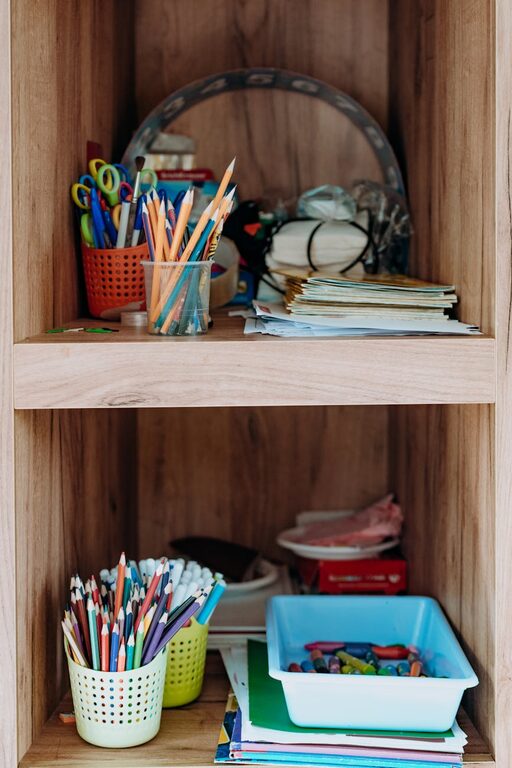Kids’ artwork is a wonderful expression of creativity and imagination. From colorful paintings to proud school projects, these pieces bring joy and memories to families. However, as the collection grows, it can easily become overwhelming and cluttered. Keeping kids’ art organized allows you to celebrate their creativity without creating chaos in your home. In this guide, we’ll explore practical tips and ideas to manage and store your children’s masterpieces effectively.
Why Organizing Kids' Art Matters
Children create a lot of artwork, and every piece often feels like a treasure. But too many drawings and crafts can pile up quickly, making it hard to find or appreciate any one piece. Organizing art helps to:
– Preserve memories in a meaningful way
– Reduce clutter and keep spaces tidy
– Show children their work is valued
– Make it easier to share or display artwork
With a system in place, you can enjoy your child’s creative journey without feeling overwhelmed.
Set Up a Dedicated Art Space
Creating a space specifically for your child’s art activities and storage can keep things contained and manageable.
Designate an Art Station
– Use a small table or desk with storage nearby
– Include bins or shelves for supplies and finished projects
– Make it a welcoming spot to encourage creativity
Display Area
– Hang a corkboard or magnetic board on the wall
– Use string and clothespins to create an interchangeable gallery
– Rotate new art regularly to keep the display fresh
This approach keeps new creations in a visible spot, boosting your child’s confidence and keeping loose papers in check.
Sort and Categorize Regularly
Regularly sorting your child’s art prevents buildup and helps you decide what to keep.
Sorting Tips
– Set a routine, such as sorting once a week or month
– Involve your child to decide on favorites
– Create categories like “Keep,” “Gift,” or “Recycle”
Types of Art to Consider
– Flat artwork (drawings, paintings)
– Three-dimensional crafts
– Digital art creations
– Special projects from school or after-school programs
Sorting helps establish what storage method suits each piece best.
Creative Storage Solutions
Once sorted, it’s time to decide how to store or display the artwork safely.
Flat Storage Options
– Use large, flat portfolios or binders with plastic sleeves
– Create a filing system with labeled folders by date or theme
– Store art in under-bed boxes or large shallow containers to save space
3D Art Storage
– Use clear plastic bins for sculptures or craft projects
– Photograph bulky items before recycling to preserve memories without keeping the clutter
Digital Archiving
– Photograph or scan artwork, especially if space is limited
– Use apps designed for saving kids’ art digitally
– Create digital photo books or slideshows as keepsakes
Display Albums
– Make customized photo books featuring art highlights
– Gift albums to relatives like grandparents
Combining physical and digital storage maximizes space while honoring your child’s creativity.
Tips for Displaying Kids’ Art at Home
Displaying art boosts your child’s confidence and livens up your space with personal touches.
Rotating Gallery
– Use clipboards or wire with clips for easy swapping
– Frame a few favorites and change them seasonally
Themed Collages
– Arrange smaller pieces into one large framed collage
– Involve your child in the design process
Functional Art Displays
– Use art to decorate notebooks, binders, or calendars
– Decoupage onto furniture or storage boxes
Be creative and involve your kids in how their art is showcased, making them proud of their work.
Involve Your Kids in the Process
Making organization a shared activity teaches responsibility and values.
– Ask your child which pieces they want to keep or display
– Encourage them to personalize their storage portfolios or boxes
– Use organizing time as a chance to talk about their art and experiences
This engagement fosters positive habits and makes the process enjoyable.
When to Let Go
Not every piece of art can be kept indefinitely, and that’s okay.
– Keep a limited number of favorites from each age or school year
– Recycle or repurpose old artworks creatively, like wrapping paper or greeting cards
– Remember that digital copies preserve memories without physical clutter
Prioritizing meaning over quantity helps keep your collection manageable and special.
Final Thoughts
Organizing your kids’ art doesn’t have to be a chore. With dedicated spaces, sorting routines, creative storage, and thoughtful display, you can celebrate your child’s creativity while keeping your home organized. Involve your children in the process to make it fun and memorable. These simple strategies help build lasting memories and create a clutter-free, inspiring environment for your family.

